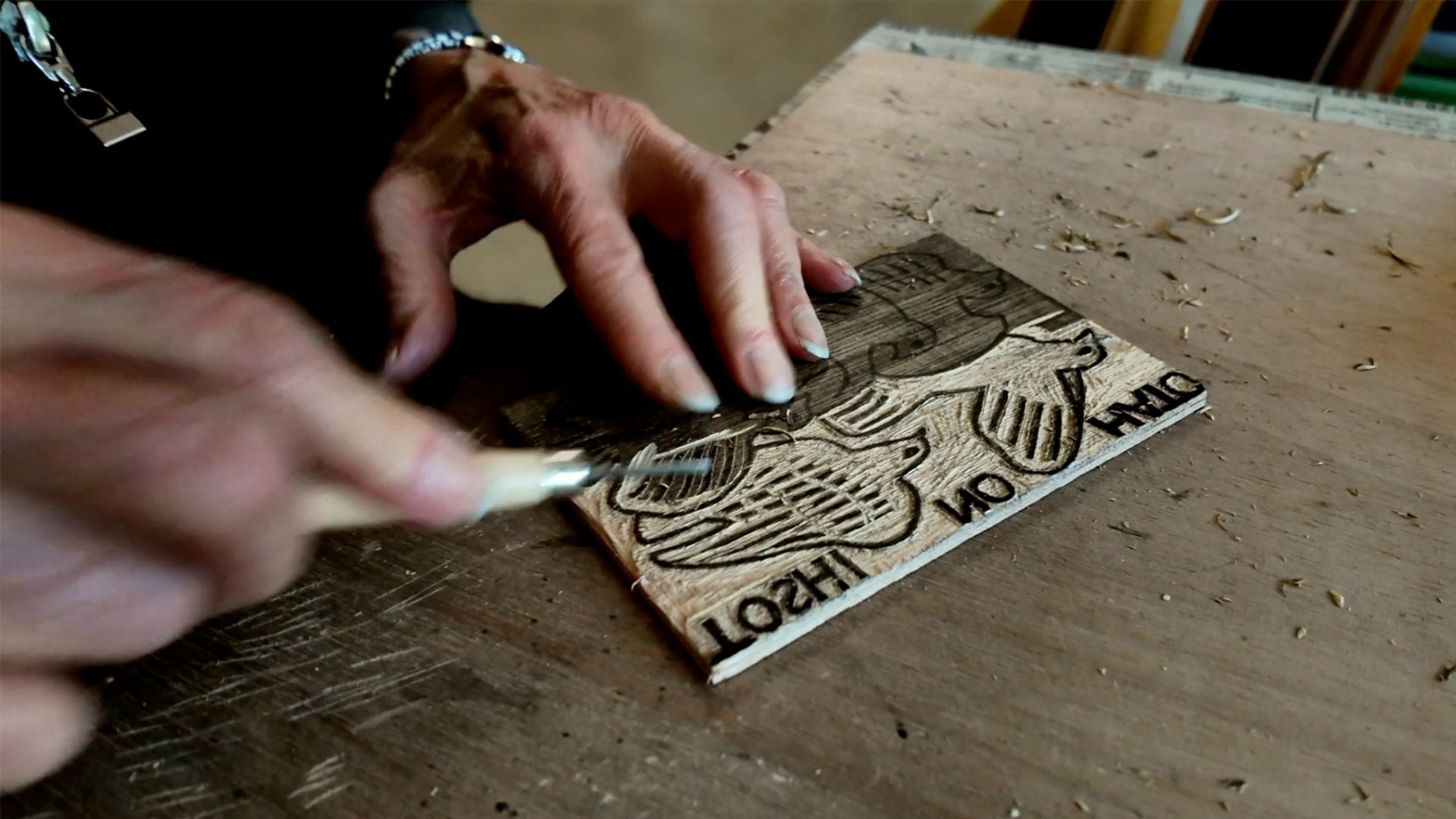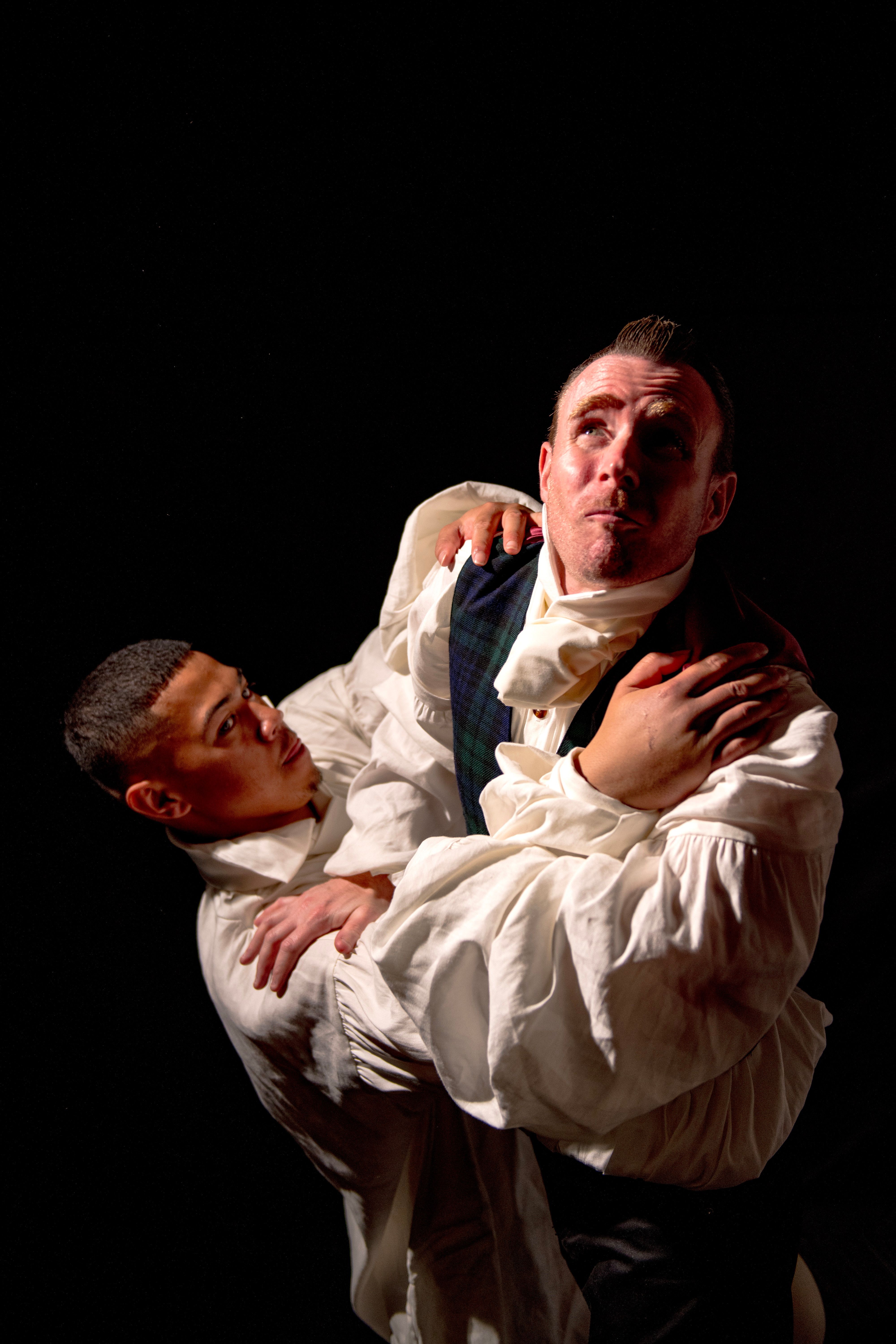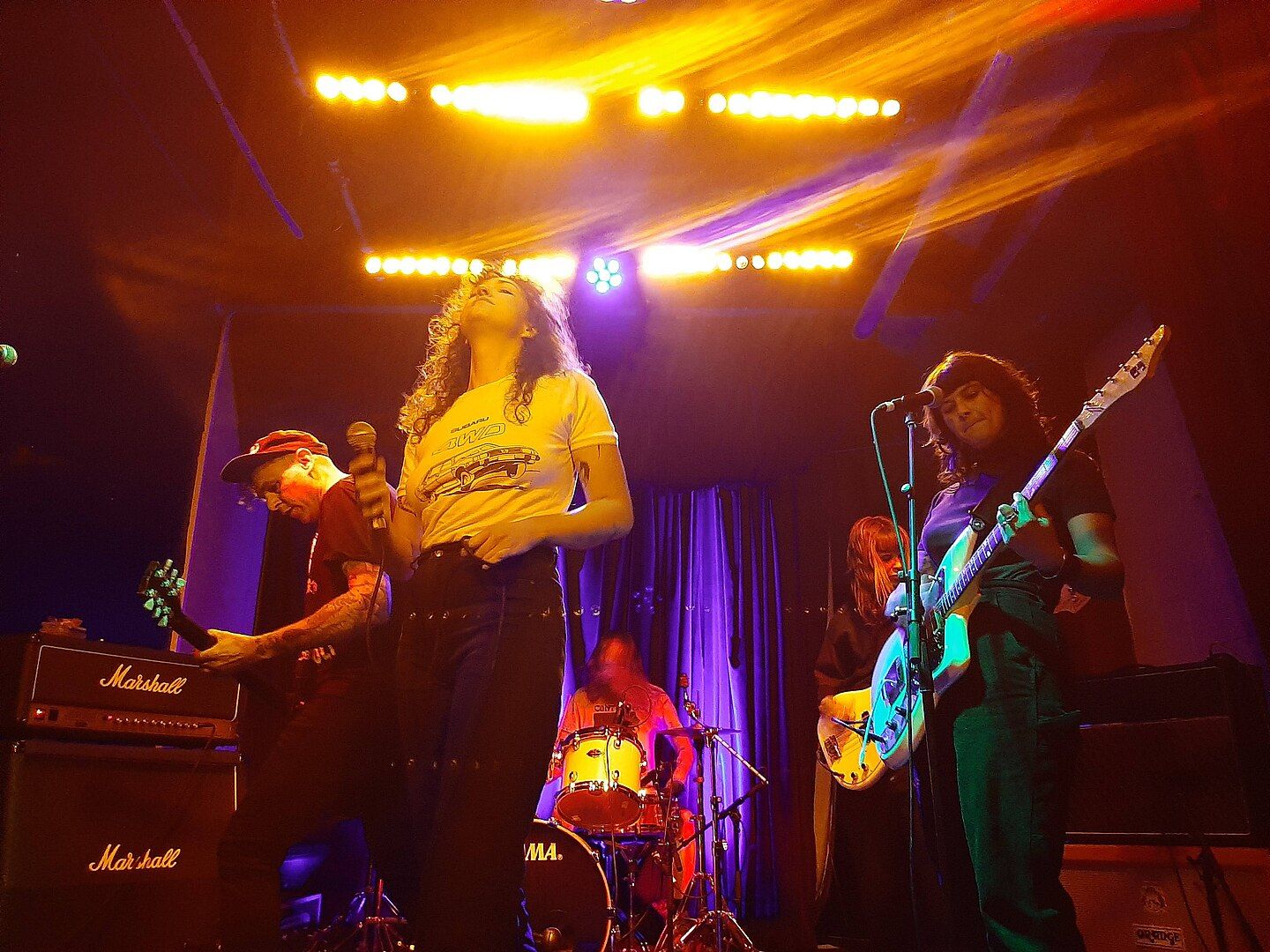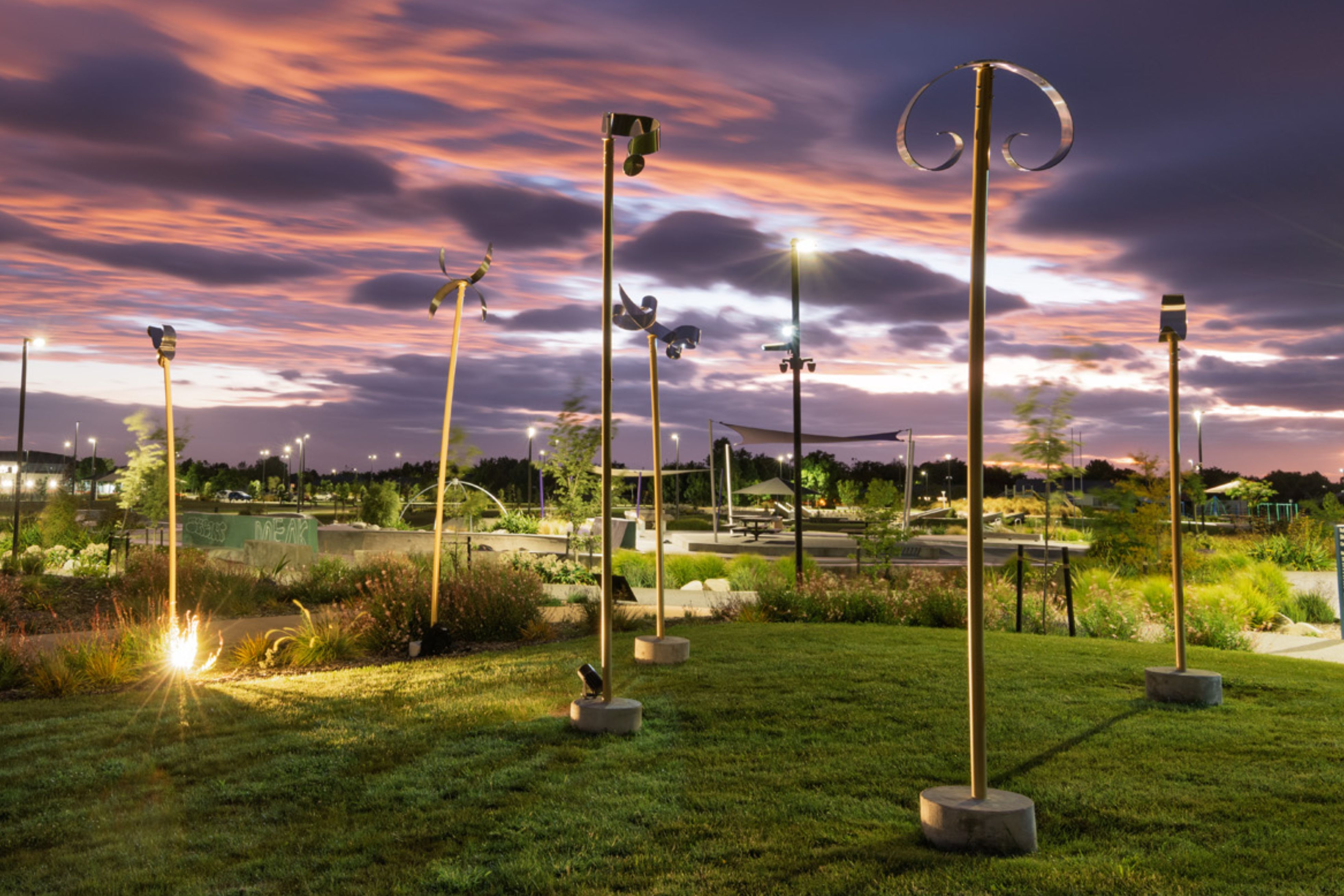Artswire: The fight to reinstate Creatives in Schools continues, AI use rolls top authors, and more
A busy week for arts happenings, all wrapped up for you.
![1000029783[95].jpg.jpeg](https://strapi.thebigidea.nz/uploads/1000029783_95_jpg_8638f88bc7.jpeg)
Last Wednesday, Dr Kerryn Palmer, arts educator of 35 years and director of Performing Arts and Young People Aotearoa, went to a Parliamentary committee meeting for the first time. It was “nerve wracking” but she was armed with butterflies created by two students from Newtown School, Eloise (5) and Ismail (9). Palmer sat facing the Education and Workforce Select Committee, made up of MPs of all stripes, and stuck to her carefully prepared script – a speech calling for the Creatives in Schools Programme (CiS), which ran from 2019 to 2024, to be reinstated. “And by this I don't mean faff around for another year and then roll out a lower-cost ‘better’ version of it,” she said. “There is no need to reinvent the wheel. The programme worked incredibly well”.
Palmer has been banging this drum since the 2024 budget cut the programme to save about $3 million a year. Budget documents stated the “programme was set up in response to Covid-19 [not correct – the programme predates Covid-19 responses] and was no longer needed”. In August 2024 she rallied troops to sign a petition via The Big Idea (and all other channels available to her) and in May this year she presented the 3,260 signature-strong petition to Labour’s arts spokesperson Rachel Boyack on the steps of Parliament.
CiS was established in 2019 under Jacinda Ardern’s Labour-led government. Between 2020 and 2023 CiS was funded to the tune of $11 million – it was given a funding boost from the creative sector’s Covid recovery package. Participating creative practitioners were paid a fixed fee of $10,000 for spending 100 contact hours with students, planning time with teachers, preparation, training, and whatever else was needed to deliver a creative project in a school over eight to 20 weeks. CiS provided a paid work opportunity for more than 750 creatives, and creative enrichment for students and teachers at participating schools. Evaluations for CiS were consistently positive, finding it an efficient way to boost students’ wellbeing and confidence and providing support for them to engage, and re-engage, with schooling, including boosting attendance. Teachers loved it.
The Ministry of Education’s website states “While the value of the CiS programme is recognised, this decision is part of a broader strategic reallocation of funds to better support current priorities and maximise the impacts of associated initiatives.” Similarly, Education Minister Erica Stanford said the Government wanted to prioritise things like structured literacy, writing, maths, and raising achievement in response to outcry over the cut, and Prime Minister Christopher Luxon said focusing on outcomes in maths and reading “may well mean we’re going to defer our arts and music curriculum for now”.

Now that Palmer has presented the petition and her oral submission to the select committee, there are more processes to go through, and no outcome is assured. The committee may seek advice from government agencies, then deliberate the merit and evidence presented, decide what their recommendation is, and write a report. The report will be presented to the House, maybe recommending the government take a specific action, give further consideration or continue on with things as they are. The government will have 60 days to respond – but it is not beholden to whatever the report may say. All in all, it's a long process and anything, or nothing, may come out of it. Very few petitions or select committee reports lead to immediate change. Most of the time the government declines recommendations, but sometimes tweaks or reviews are triggered or momentum is fuelled.
When I asked her this week what the next steps for the campaign are, Palmer said “I want to keep the issue at the forefront of both the education and arts portfolios. I believe that they need to be reminded about the way that a programme such as Creatives in Schools can serve so many current issues, such as mental health, school attendance, raising numeracy and literacy rates and community engagement”. She thinks the government also needs to be reminded that to implement the Amplify Strategy “they need to have a plan and also invest resources into it.”
Palmer was not without support in that woodpaneled room in the machinery of Parliament. Annette Thomson from Whakaari Aotearoa Drama NZ and Sacha Copland from Java Dance stood (and sat) with her. “It's always good to combine forces,” says Palmer. “There is lots of work going on behind the scenes with the different subject areas in challenging the new draft curriculum. We are an ecology, so whatever happens in schools reflects on the arts industry, we need to all work together to advocate for the arts.”
💥News on the wire
2026 Ockham criteria exclude books with AI generated covers
News broke on RNZ this week that two books by top authors, Elizabeth Smither and Stephanie Johnson, are not eligible for the $65,000 Jann Medlicott Acorn Prize for Fiction due to the books’ covers being created by generative AI. It’s the first year AI regulations have been applied to the awards, and despite it being common knowledge the world over that we should never judge a book by its cover, the criteria state that books are judged as a whole – not just on the writing but the covers too. The Christchurch-based publisher Quentin Wilson said it was “heartbreaking” and that the covers were created months before the entry guidelines were issued. “If the Awards Trust had signalled its intention to change the criteria well in advance of the submission process (such major changes are normally signalled a year in advance), more nuanced and widely understood eligibility criteria could have been developed,” he said.
The situation is unfortunate for the authors and highlights the need for clear AI policies to be signalled and in force sooner rather than later. Earlier this year Sam Ackerman asked nine organisations crucial to funding the creative sector what their stances on the use of AI in applications are. It's worth a read!

GRACE A Prayer for Peace first Aotearoa film ever to be selected for the Hiroshima International Film Festival
This month Dame Gaylene Preston will travel to Hiroshima to present her film about Artist Robin White (Ngāti Awa). It’s a milestone for being the first film from Aotearoa to be selected. Festival programmer Tomoko Nishikazi said, “I watched your film GRACE A Prayer for Peace and was really touched. Such a wonderful film!” This year the festival marks the 80th anniversary of the atomic bombing of Hiroshima.
Screenings of the film sold out at Whānau Mārama: New Zealand International Film Festival 2025, and so GRACE is having a limited theatrical run across the motu as it journeys to Hiroshima.
New Gallery on K’ Road
Film camera shop Junktion and Naked PR have just opened a new little gallery space in St Kevin's Arcade. The first exhibition is by Julia Holden and the official opening night is this Saturday 22 November from 5pm.

🌹Legendary filmmaker Lee Tamahori dies, aged 75
Perhaps best known for his 1994 film and feature debut Once Were Warriors, acclaimed Ngāti Porou filmmaker Lee Tamahori died on 7 November. Tamahori died peacefully at home surrounded by whānau. He started his career as a boom operator, and went on to direct the James Bond blockbuster Die Another Day and many Kiwi classics like Goodbye Pork Pie, Utu, and The Quiet Earth. His final feature, The Convert, was released last year. Some of his work can be accessed on NZonScreen.
“His legacy endures with his whānau, his mokopuna, every filmmaker he inspired, every boundary he broke, and every story he told with his genius eye and honest heart. A charismatic leader and fierce creative spirit, Lee championed Māori talent both on and off screen,” said his family in a statement.

🌹Commanding bass-baritone Sir Donald Conroy McIntyre dies
One of Aotearoa New Zealand’s most influential and internationally celebrated opera artists, Donald Conroy McIntyre, has died. He was named an Arts Foundation Te Tumu Toi Icon Whakamana Hiranga in 2004, the Foundation’s highest honour. Before his voice took him to Covent Garden, the Metropolitan Opera, and the Bayreuth Festival redefining what New Zealand artists could achieve on the world stage, he dreamed of becoming an All Black.
McIntyre became a notable mentor and teacher, inspiring many singers, Simon O’Neill, shared this tribute with the Arts Foundation:
“Today we farewell one of the true giants of our art – my mentor, teacher, and dear friend… Sir Don was not only one of the greatest bass-baritones New Zealand – indeed, the world – has ever produced; he was a man of immense kindness, humour, and spirit… He changed the trajectory of my life, and I will remain forever grateful.”
Ngaroma Riley named 2026 Caselberg Trust Creative Connections resident
Ngaroma Riley (Te Rarawa, Te Aupōuri, and Pākehā) is a founder of Te Ana o Hine, a wahine-led carving shed based at Te Tuhi in Tāmaki Makaurau. Her carving journey began in Japan, and she is now known for her karetao (hand-carved puppets) and love of chainsaws. Her three-month Caselberg Trust Creative Connections residency will begin in February and will see her researching whakapapa connections in Dunedin, particularly those relating to objects donated to the Otago Museum by her great-grandmother, Susan Graham, and to furniture carved by her great-grandaunt, Phoebe Graham.
Molly Elliott and Sarah Bartley named 2026 New Zealand Glassworks interns
The six-month internship provides early-career artists with hands-on studio experience, technical development, and mentorship in Glassworks facilities. Sarah Bartley says the internship is “the perfect timing to immerse myself in glass practice and expand my technical expertise while exploring light, projection and sculptural form.” While Molly Elliott says, “the tension between time and heat, and the suspense of waiting days for the kiln to reveal whether a piece has succeeded, continues to captivate me”.

Auckland Museum’s inaugural Matafatafa Aho Pacific Artist in Residence to present an installation
Benjamin Work, the very first Matafatafa Aho Pacific Artist in Residence at Tāmaki Paenga Hira Auckland War Memorial Museum is presenting an installation developed during his three-month residency. Work explored the Documentary Heritage collections and found the story of Sioeli, a young Tongan man who drowned alongside Reverend John Bumby between Rangitoto and Tiritiri Matangi in 1840. Through video and sound, Work’s installation revisits this event, acknowledging Sioeli’s courage and restoring his presence to the record. “It was sadness and a sense of injustice that first drew me to this story, one of, if not the earliest, records of an unnamed Tongan man in Aotearoa,” says Work. “My intrigue deepened upon learning that he drowned in my own backyard of Tāmaki Makaurau.”
Sioeli, The Tongan Lad, is at the museum’s research library until 5 December.
Te Pou Theatre secures Global Innovation funding from Citi Foundation
The theatre in Henderson, Auckland has been announced as a recipient of the 2025 Citi Foundation Global Innovation Challenge, meaning that it will be awarded about $860,000NZD ($500,000USD) to support a two-year pilot of a new initiative – the AKO Performing Arts Training Program. The training programme's dream outcome is to equip Māori youth with essential skills and pathways for sustainable careers in the performing arts sector. The theatre is now on the hunt for the first AKO team member, an Education and Development Programme Manager.
Tim Bray Theatre's tools for accessible theatre shared
In 2004, Tim Bray Theatre Company became the first theatre company in New Zealand to introduce New Zealand Sign Language interpreted performances. Then in 2015, the theatre company secured funding to provide audio-described performances, and in 2019, it added sensory-relaxed performances. The company closed in 2024, but now its accessibility resources have been given a platform by Arts Access Aotearoa. They are online and valuable tools and practical examples of access in action.
Teen fiction writer Fleur Beale the 2026 New Zealand Society of Authors President of Honour
The honour recognises senior writers and long-serving members for their contribution to writing, writers and the literary arts sector in Aotearoa. It also means that Fleur Beale will deliver the prestigious NZSA Janet Frame Memorial Lecture in 2026. She has written over 50 books and readers for children and young adults, and won numerous awards and recognition. "I am quite overwhelmed by the honour,” she said. “I feel that my appointment is an opportunity to spotlight the importance of writing for children who are, of course, the future readers of books for adults. We need to have a solid cohort of keen readers growing up to advocate for and support NZ writing and publishing."

Inaugural recipients of New Music Project Touring pilot fund announced
10 groups and 10 solo artists have received funding from a pilot designed to help local artists take their music on the road from NZ On Air and the NZ Music Commission. The funds, up to $50,000, covering up to 50 percent of eligible touring costs, are to help cover the costs of touring: transport, accommodation, marketing, production, venue hire and session musician fees. The solo artists are alayna, Bic Runga, Delaney Davidson, Deva Mahal, Kaylee Bell, Mel Parsons, Muroki, Rei, Sola Rosa and Theia. The groups are Beastwars, Blindspott, Borderline, Corrella, Dick Move, Earth Tongue, Foley, PARK RD, Rhian Sheehan & Arli Liberman and The Black Seeds.
Lucy Macrae from Tāmaki Makaurau-based band Dick Move, says the funds will allow them to expand their tour further and include three all ages shows. “Having the funds will allow us to keep ticket prices at an affordable price for our fans – which is really important in this climate to be able to keep live music accessible – be able to pay our support bands a fair performance fee, and has given us the confidence to be able to expand the tour further into more regions and venues around the motu”.
In more good news, the fund will be back in 2026.
👔 Human resources
Molly McLennan is 95bFM’s new Programme Director
Following a stint in LA, Molly returned to 95bFM last year as Executive Producer. The radio station says that Molly is incredibly dedicated to their community, passionate about local alternative music and training the next generation of radio personalities. (bFM is now on the lookout for an Executive Producer).
Applications for Engine Room residencies closing 28 November
Auckland Theatre Company's professional development programme for early to mid-career theatre practitioners offers three paid residencies. Residents will work alongside practitioners like Dan Williams, Sophie Roberts, Anapela Polata'ivao, and Benjamin Kilby-Henson across productions. There are three places, across design, direction and musical theatre direction.
👀 Further reading

On Tuesday we dropped a new monthly column – Toi Ōtautahi Dispatch. Think of it as an Artswire for the garden city. The column is a partnership with Toi Ōtautahi, Christchurch’s virtual arts office. Each month Zara Potts will bring you a roundup of what’s happening in the arts across Christchurch.
We sent Shanti Mathias to visit Hagley Theatre School to watch rehearsals and ask artistic director Pedro Ilgenfritz what he’s changed to differentiate the “brave little school” from other programmes.
There’s a hot new version of Woman Far Walking that everyone is talking about in Tāmaki Makaurau, but how did it become bilingual? Eda Tang interviewed Maioha Ki Te Ao Tūroa Allen, the kaihāpai reo Māori and translator of Tiri Te Araroa Woman Far Walking.
Artist, curator, and instigator DJCS has published an essay about the state of the arts, namely competition, scarcity and silencing. They signal a few ideas driving their new gallery COMMODE – keep your eyes peeled for an excellent Pathfinder on the Te Whanganui-a-Tara gallery next week, or the following, on The Big Idea.
📧 Say hi!
Let me know what you think about the Artswire and our other editorial coverage at editor@thebigidea.co.nz